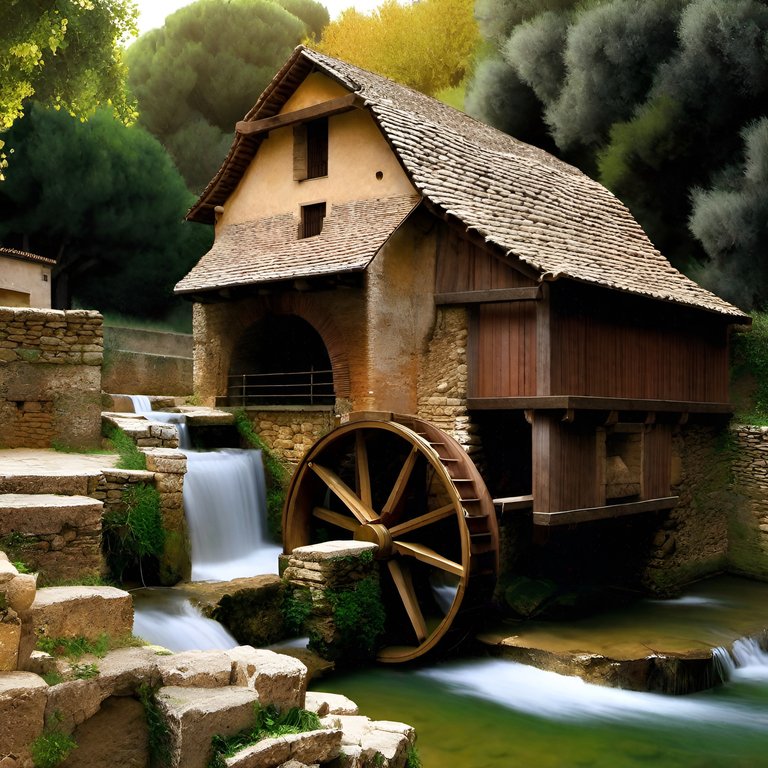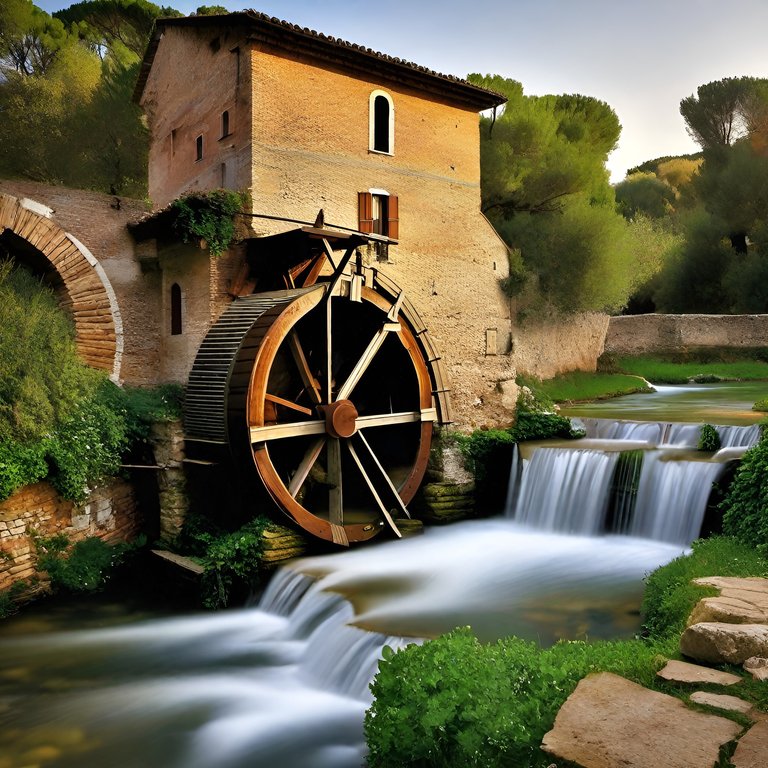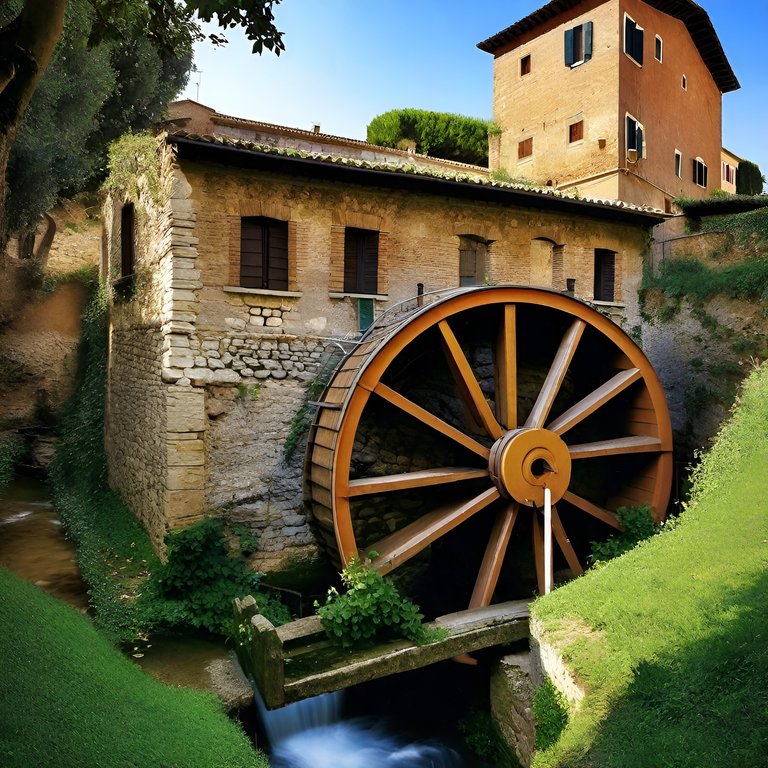Good day dear Hive Community, I would like to wish everyone a good day and hope you have a pleasant holiday! In my contribution today, I would like to address an interesting historical topic and hope you can expand your knowledge.
Here are some works of art that are supposed to represent mills and I have created them with the help of artificial intelligence and specifically I would like to address mills in ancient Rome. The Romans have contributed a large part when it comes to the history of the mills and the well-known Roman scholar has already mentioned the importance and also the origin of the water wheel as it was still used until industrialization can be traced back to Italy and the well-known engineer and architect Marcus Vitruvius Pollio constructed the base of the water mills and this technique quickly spread throughout Europe. There are numerous traces that the Romans created enormous mills and were also responsible for the development of further technical developments which was also important for the function of sawmills and the mills spread more and more throughout the Roman Empire and mainly it was used to grind grain and also interesting techniques were developed which process the dough with the help of hydropower. The emergence of the first ship mills can also be traced back to the Romans, which was developed at that time during the siege of Rome by the Ostrogoths and during this time the entire water supply of Rome was attacked and out of necessity the Romans began to build floating mills to secure the food supply of the population.
In the 15th century the Spanish explorer Christopher Columbus and other explorers also brought more and more raw materials to Italy and Venice was at that time a massive center for trade and the mills also benefited greatly from it and were able to process new raw materials in addition to cereals and this was also important to meet the ever-increasing demand and in the Roman Empire enormous amounts of flour were consumed. In general, Spain was also considered an important country when it comes to the mills and has also made a huge contribution to development and often the mills in ancient Rome were also associated with the goddess of grain and agriculture ceres and numerous patron saints were also associated with it and also many traditions or festivals were celebrated which have been brought into association with the mills and everywhere you can still see paths and roads named after old mills. In general, you can find traces of water supplies everywhere in the ancient Roman Empire which suggest how developed the Romans were in this regard and even if the traces are not always easy to trace because a lot has been demolished, I think it is good that there are circles behind it that try to explore the routes and locations of the old mills across the Roman Empire.
Many thanks for taking the time to read through my post and I hope you like it and can learn something new about history!



A great work of Rome.
Thanks for your comment :)
#hive #posh
So interesting to learn about this I must confess
It means a lot to me that you can learn something through my contributions!
Romans always have a lot of ancient fact that kickstart new things and inventions
That’s right, they were very innovative in many ways!
So innovative at times I strongly believe
~~~ embed:1739106298166182327?t=VIoffvaGYR9SFv-RAN1PGw&s=19 twitter metadata:YWRlbmlqaWFkZXNoaW43fHxodHRwczovL3R3aXR0ZXIuY29tL2FkZW5pamlhZGVzaGluNy9zdGF0dXMvMTczOTEwNjI5ODE2NjE4MjMyN3w= ~~~
It beautiful and the history is interesting
Good that you are also interested in this important part of culture :)